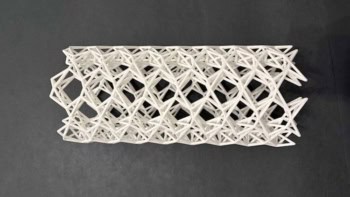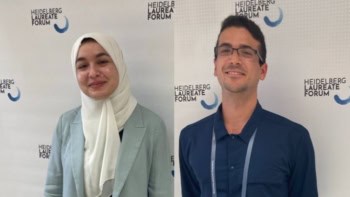
Inorganic ferroelectrics have promised to change the face of semiconductor electronics for almost a century, but high processing costs have so far limited development. Now, researchers at Southeast University in Nanjing, China, have paved the way for progress by fabricating the first metal-free perovskite crystals. They present a set of materials that can achieve the performance of inorganic ferroelectrics but with the versatility, low-cost and low-toxicity inherent in organics.
To induce the directional switching of polarization characteristic of ferroelectricity, a material must contain a spontaneous dipole that can respond to an electric field. In other words, the centres of positive and negative charge within a crystal must be different. For metal-free perovskites, this should theoretically happen when a highly symmetric non-ferroelectric state is ‘frozen’ into a state with polar symmetry.

From database to device
With this in mind, Ren-Gen Xiong and Yu-Meng You instructed their students to scour the hundreds of thousands of entries in the Cambridge Structural Database for molecules of suitable size and symmetry. Such candidates could then be incorporated into the traditionally metallic “A” site of the perovskite structure, yielding an all-organic perovskite ferroelectric.
The result of their efforts is the discovery of 23 metal-free perovskites including MDABCO-NH4I3 (MDABCO is N-methyl-N’-diazabicyclo[2.2.2]octonium). This particular crystal displayed a spontaneous polarization of 22 microcoulombs per centimetre square, close to that of the state-of-the-art perovskite ferroelectric, BaTiO3 (BTO). In addition, crystals can be formed readily at room temperature, avoiding the excessive heat (>1000 oC) required to make inorganic ferroelectrics. This will lower fabrication costs and open the door for more delicate device applications such as flexible devices, soft robotics and biomedical devices.
The MDABCO molecule is crucial to the large spontaneous polarization that the researchers observed. At high temperatures, excessive thermal energy leaves the MDABCO molecule in a state of free rotation within the crystal. Here, the average centres of positive and negative charge at the molecule site are the same and ferroelectricity is forbidden. However, when cooled below the phase transition temperature of 448 K, the MDABCO molecule becomes locked in place revealing a significant dipole with eight possible polarization directions.
Beyond binary
Ferroelectric random access memory (Fe-RAM) works on the principle that individual cells are charged to states “0” and “1”, represented by different polarization directions of the active material. As ferroelectric crystals tend to have two polarization states, we obtain the well-known binary system. The eight possible polarization directions in MDABCO-NH4I3 then, will pique the interest of those looking to make next-generation memory devices.
“In principle, eight polarization directions could be used to make an octonary device with eight different logic states”, explains Yu-Meng You. “This is a potential strategy for increasing the density of future RAM devices”. While You expresses concern over increased architectural complexity in such a device, the potential for cramming eight bits into a single cell could add to the commercial prospects of this set of materials.

Data storage prospects broaden for antiferromagnetics
Prospects for perovskites
But the opportunities for advancement don’t stop at memory applications. “We have demonstrated a new system of perovskites with compositional flexibility, adjustable functionalization and low toxicity. We expect the metal-free perovskite system will attract great attention in near future”.
Full details are reported in Science.



